Where Do Squirrels Sleep? A Surprising Answer
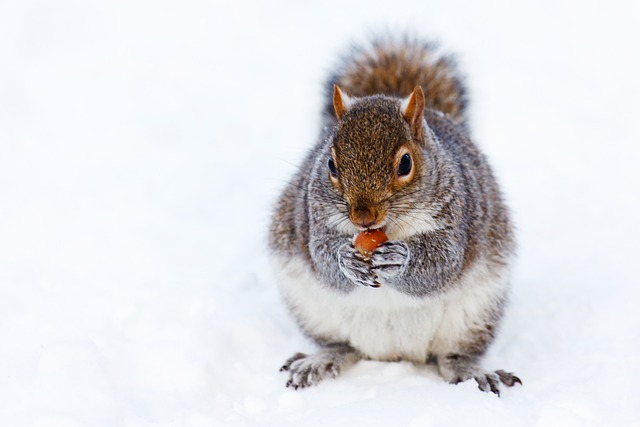
Where do squirrels sleep? Ground squirrels sleep in the ground, and tree squirrels sleep in trees.
Depending on the species, the season, and the country’s region in which it lives, a squirrel will sleep and live in different places. The majority of the time, ground squirrels sleep underground in tunnels up to 30 feet long, while gray and red squirrels typically rest in tree nests called dreys.
Please read on.
Table of Contents
Do Squirrels Sleep?
Squirrels are unusual among animals in that they are active during the day and sleep for a significant portion of the night. Three main subgroups make up the squirrel family. Flying, ground, and tree squirrels are all different species. These squirrels have the unusual characteristic of sleeping in various locations. For example, after they are born, tree squirrels spend about six weeks sleeping and only residing in their nest.
Then they open their eyes, scan their surroundings, and begin to spend time outside of their nests. When they are fully grown, which takes about ten months for the majority of species and eighteen months for the flying squirrel, they begin to construct their nests, where they will live and sleep.
Tree Squirrels May Establish A Cavity Nest For Sleeping
Tree squirrels occasionally build nests out of leaves as well as in woodpecker-made cavities. These fissures occasionally develop naturally. Dens or cavity nests are the names for these houses. Installing a squirrel nesting box will allow you to replicate this kind of environment.
In comparison to leaf nests, dens have several advantages. The squirrel has more reliable defense from the elements and scavengers with a den. It is protected from wind, rain, and snow. Additionally, it gets to spend less time maintaining its cavity nest.
Squirrels have a constant upkeep requirement for their leaf nests. To maintain the integrity of their leaf nests, they must add fresh twigs, leaves, and debris. Squirrels can spend more time relaxing and conserving energy in a den because it doesn’t require as much work, especially in the winter.
A ground hole made by a ground squirrel or another animal may occasionally be occupied by tree squirrels. However, they only search for these holes in an urgent situation. For instance, they might have to find new homes right away to avoid freezing if their nests are destroyed during the winter. One of the important factors that contributes to a squirrel’s ability to live a long life is the availability of ideal nesting sites.
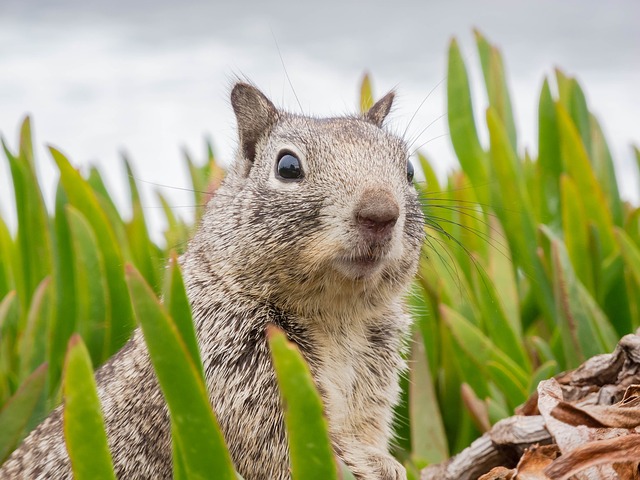
Baby Tree Squirrels Stay At Home
Baby tree squirrels never leave the den or nest after birth. Like many mammals, baby squirrels are born blind and deaf. They don’t start opening their eyes for several weeks.
Around eight weeks after birth, baby squirrels are weaned. They then begin to eat solid foods and leave the den or nest. They are capable of gathering their own food after ten weeks. They leave home when they are ready to live independently and find places to sleep.
Ground Squirrels Sleep In The Ground
Sleeping in the ground are ground squirrels. These animals enjoy digging burrows, and they frequently build them underground, complete with a variety of tunnels and tiny holes. These tunnels can be anywhere between 15 and 30 feet long, have a number of different tunnels, and have multiple entrances (source).
While some of the tunnels are used only for sleeping, others may be used exclusively for storing food. Along with being clean, these holes are usually. Unlike a gopher hole, you won’t find any excavated soil close to the location of the hole.
Ground squirrels stick together, whereas tree squirrels prefer solitude and do not share nests. A ground squirrel colony with a complex social structure, similar to other rodents, may live in an underground shelter.
Read about: How Long Can Bed Bugs Live Without Food
What Time Do Squirrels Sleep?
So how do squirrels manage to sleep for what sounds like an incredible nearly 15 hours every day?
Since they are crepuscular, they only become active at dawn and dusk. For the majority of these animals, at least, that is accurate. In the summer, some species—tree squirrels in particular—may spend the entire day outside of their nests because they enjoy the sunshine.
Squirrels will be in their nests resting or sleeping when they are not scurrying about in search of and hoarding food or mating. You can bet that squirrels try to evade predators by staying in their nests at night because most of the nocturnal animals that prey on them here in the greater Austin area do so.
The Location Of Squirrels’ Winter Homes
Winter hibernation is a common occurrence for some squirrel species, but not all. In contrast to flying and tree squirrels, ground squirrels hibernate during the winter. They strengthen their nests to provide protection from the cold weather. During this time, flying squirrels favor residing in groups.
Ground squirrels go into a state of prolonged sleep in the winter. Ground squirrels retreat to their burrows to rest during this time. Their heart rate slows down, and their body temperature drops during these times. They sleep more hours at night to conserve energy. This time frame could last for up to five months.
Nevertheless, they are still present during this time because they spend an average of 12 to 20 hours awake each week scavenging for food.
Where Do Squirrels Sleep When It Rains?
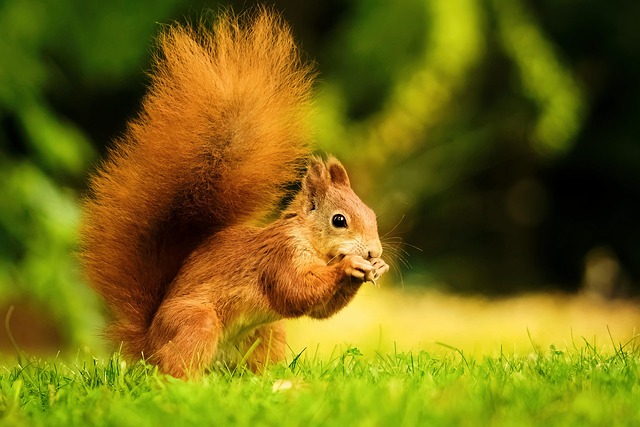
Squirrels are diminutive rodents. They lose body heat more quickly than large animals because of their small body to surface area ratio. Therefore, it’s crucial that the rain doesn’t soak their bodies because when it does, the water makes it even harder for the tiny mammals to regulate their core body temperature.
How do squirrels avoid getting soaked during Austin’s infrequent but frequently intense downpours?
They have a few sleights of hand. They first protect themselves from the rain by using their bushy tails. They use the tail to flip over their body, sort of like an umbrella. The rest of the body is largely dry even though the tail may get wet. However, this is most effective against light rain.
Squirrels hide in their nests to avoid intense downpours. The nests are typically constructed and placed with care to provide maximum protection from rain and cold. A squirrel can withstand torrential downpours and thunderstorms in this way.
When Do Squirrels Move into Your Home?
Like most wild animals, squirrels might be drawn to your home because it protects them from dangerous outdoor elements like freezing temperatures, predators, and unfavorable weather.
So, there you have the first part of your response. When things appear to be better inside than they do outside, they move in. That means that under a few circumstances, squirrels might be drawn to your house.
Hot Weather
What would you pick if you had to choose between comfortable air conditioning and temperatures that were over 100 degrees? The same choice as a squirrel, most likely.
Cold Weather
Austin can still get quite chilly outside, and we occasionally get frosts and even snow even though we don’t experience the extreme cold of many northern states. Your home probably appears quite attractive when this occurs.
Storms
When you can simply set up shop inside the nice, cozy house with lots of nooks and crannies, why take the chance of being blown out of your tree or flooded?
When Predators Are Nearby
Weasels, foxes, hawks, and owls. You would want safety and security if you were fleeing with your family from one of these dangerous creatures. Your home is a symbol of that.
So how do squirrels get inside your home?
Small cracks and gaps in the walls, doors, windows, floors, or roof allow these rodents to enter. Even some of the more aggressive squirrels have been known to chew their way inside. Once inside, the rodent constructs nests in concealed areas like the attic, ceiling, chimney, and inside the walls.
Dangers of Having Squirrels in Your Home
We briefly touched on this above, but squirrels that enter a home pose a threat to both the home and the occupants as well. Squirrels pose a risk to your family, can harm your property, and spread disease.
Increased Risk of Fires and Electrocution
Power cable-gnawing squirrels have been mentioned a lot. They run the risk of electrocuting themselves if they chew through a live electrical cable. The rodent might catch fire while being electrocuted, which would then cause your home to catch fire.
They might also cause your home’s power to go out in addition to starting a house fire. A risk of accidental electrocution exists in the home as a result of the squirrel’s chewing on exposed electricity wires.
Bites, Scratches Or Other Injuries
Squirrels are typically timid animals that avoid physical contact with humans. Large squirrels have, however, occasionally attacked young children. Some of these assaults may be so vicious that they seriously hurt a child. A beloved family pet may also be bitten or scratched by a squirrel.
Property Damage
Squirrels have powerful front teeth that can easily chew through a house’s siding and fascia. Furthermore, these pests have been known to eat away at window sills and door frames, gnaw through roof shingles, harm HVAC systems, block vents, and block gutters.
Your home’s value may decrease as a result of this damage, and making repairs is neither simple nor inexpensive.
The fact that squirrels frequently perish in remote locations is equally frustrating. Decomposing dead squirrels produce an unpleasant odor that seeps into your home over time. This process is not only unhygienic but also unsanitary.
Vehicle Damage
Not only your home and loved ones are at risk. It has been observed that squirrels enter car engines.
These creatures typically hide out in rarely used vehicles. When they are inside, they might create a nest in the engine. It’s also in a squirrel’s nature to gnaw on wires and other parts of a car, and the damage that results is frequently expensive to repair.
Other Health Risks
Salmonella and bacteria that cause leptospirosis are two examples of the disease-causing substances carried by squirrels and their droppings. Additionally, illnesses like fever, headaches, stomachaches, vomiting, enteric fever, gastroenteritis, food poisoning, and more may be brought on by pathogens associated with squirrel-borne diseases.
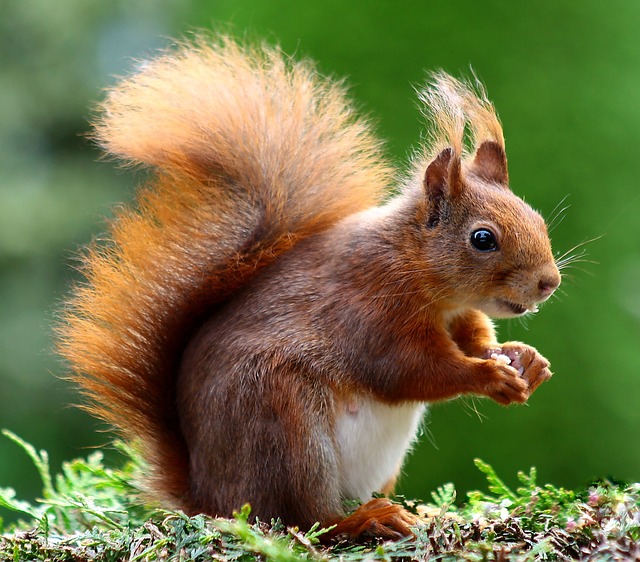
Signs That Your Home Has Squirrels
Large rodents, squirrels are. As a result, it’s usually simple to identify when a squirrel has entered your home as an unwelcome guest. Experts recommend that you watch out for the following signs of squirrels in your home:
- Scampering, scratching or jumping noises in the attic, chimney or walls
- Damaged entry points like fascia boards, panels along the roof line and/or shingle damage
- Interior damage that may include chewing on furniture, shredded ductwork, bad odors in the attic, and chewing on electrical wires.
- Visual identification of squirrels seen coming in or out of your house
The squirrel’s capacity for destruction is frequently underrated. Just a little bit of nibbling and gnawing from a pack of persistent squirrels can result in some major headaches in your house.
FAQs
Where Do Grey Squirrels Sleep?
Squirrels are den builders and they’ll build themselves a den (or a ‘drey’ as it’s also known) out of twigs and branches in the fork or hollow of a tree or even in an attic or barn if the opportunity arises.
Where Do Squirrels Live?
Habitat. Ground squirrels prefer grassy habitats, such as open fields, pastures, and parks, and typically burrow into the ground to build dens. On the other hand, flying and tree squirrels favor dense forests and build their nests in the tops of trees.
Conclusion
In contrast to ground squirrels, which frequently live in groups, tree squirrels also frequently live alone.
The nests that the tree squirrels typically live in are constructed out of a variety of twigs, leaves, and other organic materials. The ground squirrels make intricate tunnel networks by boring holes in the ground.
The ground squirrels may hibernate in their burrows over the winter. The tree squirrels are still active, though. They might go gather food they’ve saved and tend to their nests.
Squirrels require the same amount of rest as other animals. If you come across one of their homes, you should treat it with respect and refrain from destroying it.

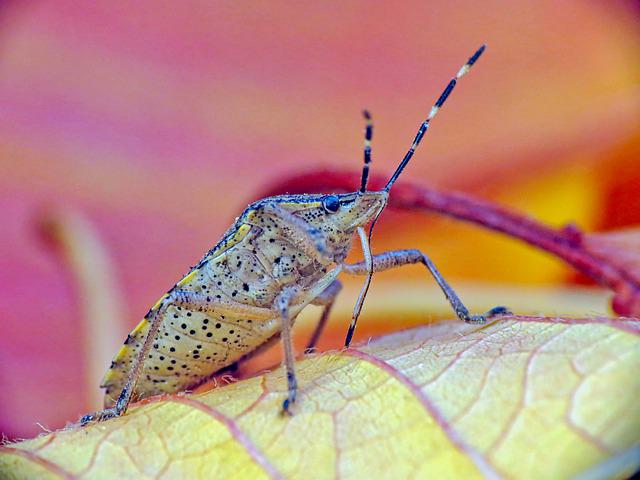
















![Therapedic Mattress Reviews Buy Or Avoid [2022]](https://www.myspacebeds.com/wp-content/uploads/2022/10/Therapedic-Mattress-Reviews-Buy-Or-Avoid-2022-520x293.jpeg)


